How to plant hyacinths correctly and is it difficult to care for them outdoors?
The plant with a poetic name, which in translation means "rain flower" and goes back to the touching and at the same time tragic story of love and friendship, sung in ancient Greek mythology, simply must have a spring-like tender, discreet, but enchanting beauty. To succeed in its breeding and get a lush early bloom, it is worth figuring out when to plant hyacinths and what is the care of these perennials.
Ideal plot
Hyacinths love light, so open, but windless areas of the garden, generously flooded with sunlight throughout the day, are preferred for their cultivation. It is advisable to arrange a flower bed away from shrubs and trees, since the shadow falling from them will create uncomfortable conditions for flowers, and their powerful roots will pull out the bulk of the nutrients from the soil. Plants will not develop evenly under these conditions, and are likely to remain weak and sore and produce few buds, even if properly cared for.
Hyacinth bulbs are very sensitive to water stagnation in the soil, which creates a favorable environment for the development of fungal diseases and all kinds of rot. Therefore, it is better if the surface of the site has a slight slope. It is also important to take into account the depth at which the groundwater is located, it should be at least 0.5-0.6 m. If they come closer to the surface of the earth, you will have to make high beds or provide the plants with good drainage by pouring a thick layer of expanded clay.
Hyacinths are best suited for light, loose soil, which freely allows oxygen and moisture to pass to their bulbs. It should be neutral (up to pH 6.5) and well saturated with nutrients. The ideal soil for flowers consists of leafy and turfy soil, mixed in equal amounts and slightly diluted with baking powder.
If the soil in the area where it is planned to plant hyacinths is acidic, it must be liming. For this procedure, you can use formulations with a high content of calcium and magnesium:
- slaked lime;
- cement dust;
- wood ash;
- ground chalk;
- lime tuff;
- dolomite flour;
- drywall;
- ground limestone.
To facilitate heavy, dense soil with a high clay content, peat and river sand are added to it.
Preparing for planting bulbs
Planting hyacinths in open ground requires preliminary site preparation. They begin to it at least 10 days before planting the bulbs so that the roots of the plants do not suffer during the process of soil subsidence. In the place of the future flower bed, they dig a shallow hole and cover its bottom with a layer of river sand, reaching 3-5 cm.
The soil is thoroughly fertilized. It is good to use three-year-old humus for this in combination with a complex mineral remedy. Another option for enriching the soil is 2 months before the flowers are supposed to be planted, dig up the area to a depth of 40 cm, having previously sprinkled it on each square meter
- humus (10-15 kg);
- peat;
- sand;
- superphosphate (60-80 g);
- potassium sulfate (30 g). It is permissible to replace it with wood ash in the amount of 200 g;
- magnesium sulfate (15 g). Dolomite flour (250 g) is often used instead.
Advice
If the soil on the site contains a lot of sand, the recommended dose of potassium-magnesium compounds will need to be increased by 1.5 times.
The key to getting strong and viable plants is to plant healthy bulbs.They should be carefully examined, getting rid of soft, damaged and diseased ones, sorted by size, and then treated with Fundazol or another fungicide according to the instructions, or dipped in a potassium permanganate solution for 30 minutes.
Features of planting bulbs
Growing hyacinths outdoors is best done with medium-sized bulbs. The plants that have developed from them are more resistant to fluctuations in temperature and humidity. They are planted at a depth three times the height of the bulb itself. The quality of the soil is also important. If it is light, the hole is made 2 cm deeper; if it is heavy, the recommended distance is reduced by 2 cm. Between large bulbs (5 cm in diameter), 15-20 cm are left in a row, smaller ones are placed closer to each other. In general, the same “three” principle works here: a distance equal to three of its diameters should remain free around the bulb.
It will be much more convenient to take care of plants in the open field if the beds for them are made high (10-15 cm). It is easier to cover them for the winter, and in the spring they are freed of snow earlier and the soil on them warms up faster. In addition, this method of growing hyacinths helps protect their bulbs from waterlogging and provide the soil aeration they need. The flowers are planted in moist soil. If the soil was dry, then ready-made beds are well spilled. Optimal for planting hyacinths in the garden in the middle lane from the end of September to mid-October. If done earlier, the flowers will begin to grow and die in winter.
Advice
You can plant the bulbs later, but in this case, the site must first be covered with a thick layer of dry leaves, compost or spruce branches and protected from precipitation, after the procedure, returning the shelter to its original place.
Planting hyacinths is carried out according to the following scheme:
- In the prepared area, holes or grooves are made.
- The bulbs are lightly pressed into the sand and sprinkled with them on top.
- Fill the hole with the bulb with nutritious soil to the top.
- The soil is mulched using humus or peat. Additionally, you can sprinkle dry foliage on the beds, which will protect the flowers from freezing.
Compliance with these rules makes it easier to care for plants and is a guarantee of their health. The sand acts as a drainage, protecting the bulbs from waterlogging and fungal infections. If the site has not been previously dug up with humus and peat, they are brought into the hole during planting.
Watering and weeding
Outdoor hyacinth care includes several mandatory activities. It is important for these perennials that the soil around them is free of weeds, so they need regular weeding. A good option that will save the time and effort spent on it is mulching the beds after planting hyacinths on them. A layer of mulch will also keep the soil from drying out and protect the flowers from disease.
The plant bulbs require a constant supply of air. It is not difficult to provide it, you just need to carefully but carefully loosen the top layer of soil. Such care is carried out constantly from the moment of emergence of seedlings until the end of the growing season.
Hyacinths prefer infrequent but plentiful watering, during which the soil should be soaked 15-20 cm. Moisture should be avoided on the leaves and buds. Plants do not tolerate spraying. Excess water has a detrimental effect on flowers, so you need to control the moisture content of the soil. Particular attention should be paid to this during bud formation. When the dormant period begins, watering is reduced. Proper hyacinth care includes regular inspection of the plantings. Having found diseased plants, they are removed from the flower bed and immediately burned.
Another important point is pruning hyacinths. It is carried out when the flowering period is over. The stem with wilted buds is cut with a knife. If this is not done, the plant loses its attractiveness.But you can return it to its aesthetic appearance in another way - to get rid of only withered flowers. To do this, it is enough to run your hand along the stem from its base to the top. Dead flowers will fall off by themselves.
Fertilization and preparation for wintering
The main care for hyacinths, which allows you to get lush flowering plants, is their competent feeding. It is carried out in three stages:
- In the spring, when most of the planted bulbs give their first shoots, the soil is enriched with mineral compounds. On 1 m² of soil, 20 g of ammonium nitrate, 15 g of superphosphate and 10 g of potassium chloride are added.
- During the period of active bud formation, fertilizing is repeated using the same amount of ammonium nitrate, but increasing the proportion of the remaining components by about three times (superphosphate up to 40 g, and potassium chloride up to 20-30 g).
- When the plant fades, it is fertilized with a mixture of superphosphate and potassium chloride in equal quantities (40 g each).
Advice
If dry compounds are used to enrich the soil, they are scattered over the soil and then embedded in it with a hoe in the amount indicated in the instructions. When using a liquid form of fertilizer, the plants are first watered abundantly, and the recommended dose of the drug is slightly reduced.
The feeding procedure should always be completed by loosening the soil. Fresh organic fertilizers are categorically contraindicated for hyacinths. Caring for perennials in the form of watering and feeding continues as long as their leaves remain green. This will allow their bulbs to accumulate enough nutrients for future growth and flowering before entering the dormant stage.
To prevent the plants from freezing in winter, they need shelter. You can save the beds from the cold with sawdust, spruce branches, straw, dry peat or humus. Hyacinths belong to primroses, and their shoots break through the soil very early, therefore, they free the plantings from winter protection at the very beginning of spring. This must be done very carefully so as not to injure delicate seedlings.
For all their touching charm, hyacinths are demanding and capricious plants. It is possible to expect that with the arrival of the first warm days they will bloom the garden with bright colors, if you provide them with proper care.
Competent planting, regular watering and weeding, adherence to the intricacies of feeding are the basic principles that must be adopted when growing these perennials. We'll have to be patient and devote a lot of attention and time to the beds with hyacinths. But how nice it will be to see the results of your labors when in early spring the plant is thickly covered with delicate fragrant flowers!
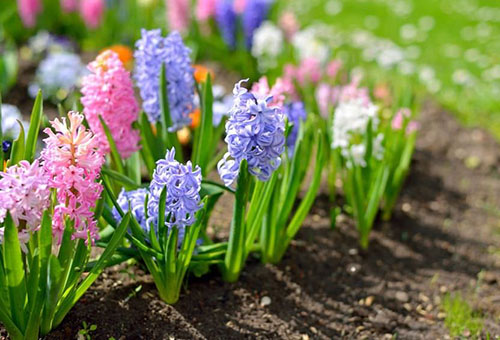
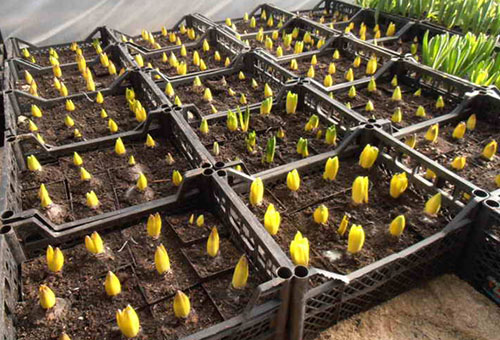
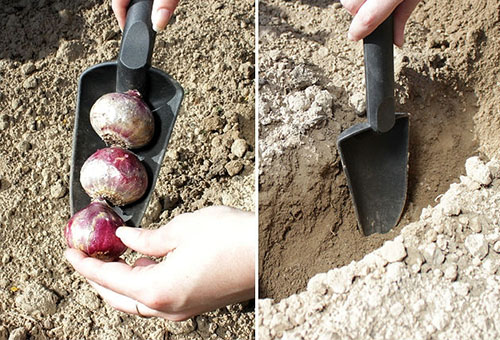

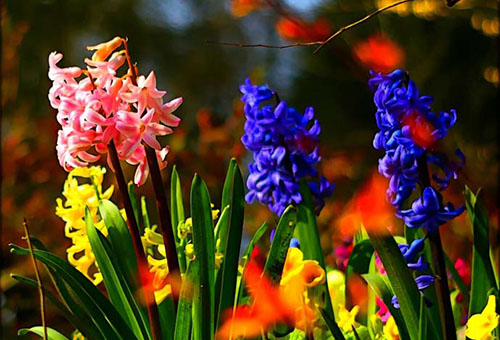
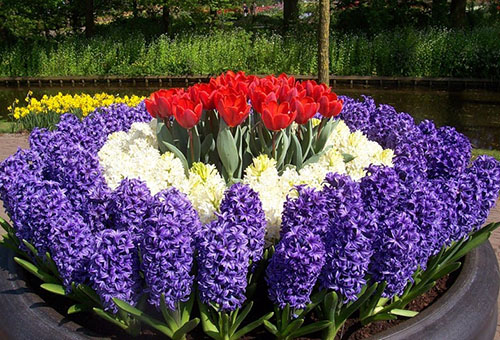
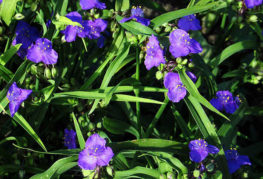
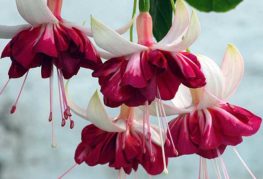
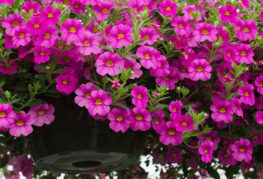
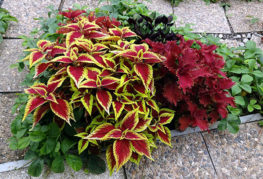


and will be published shortly.